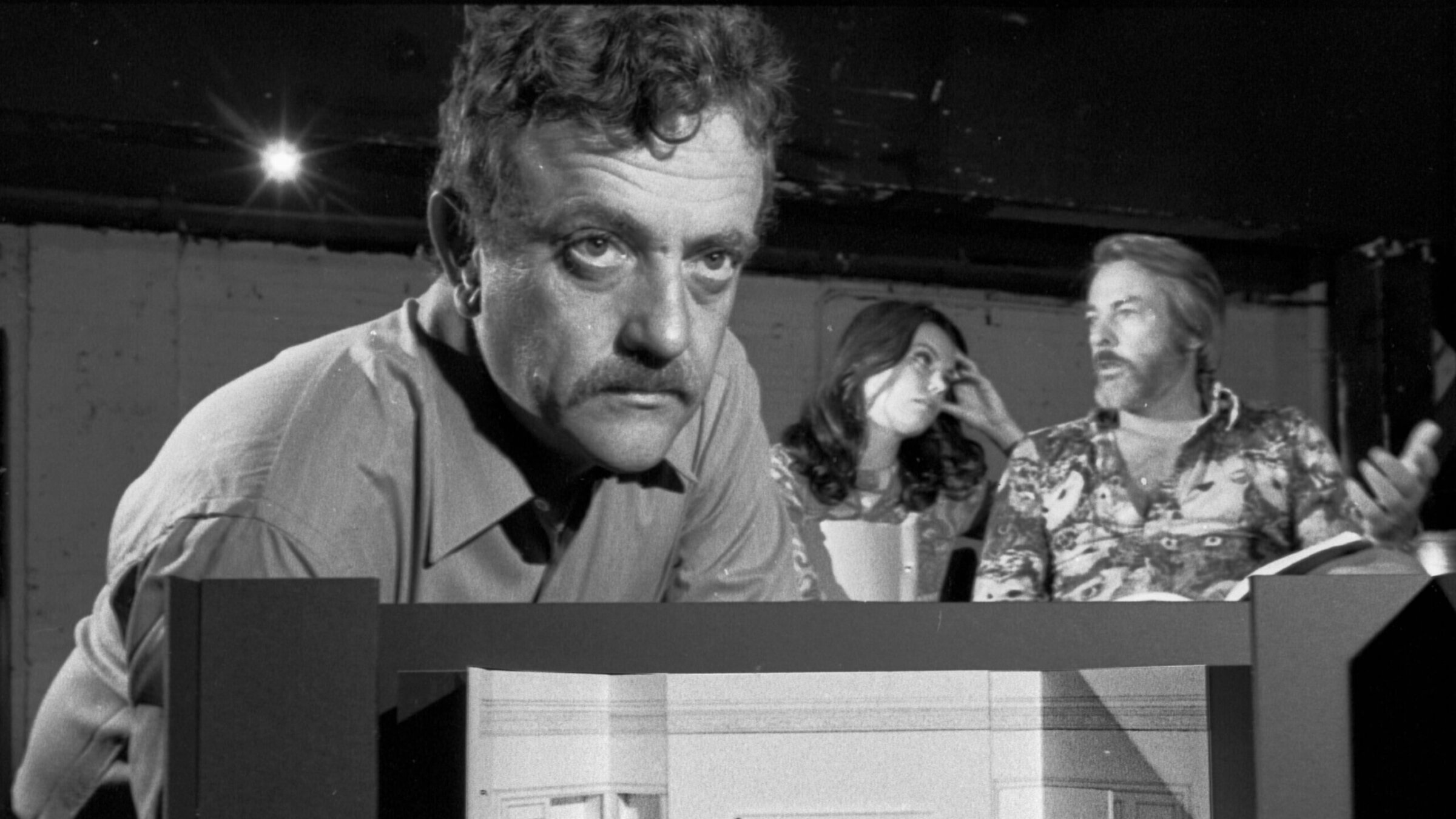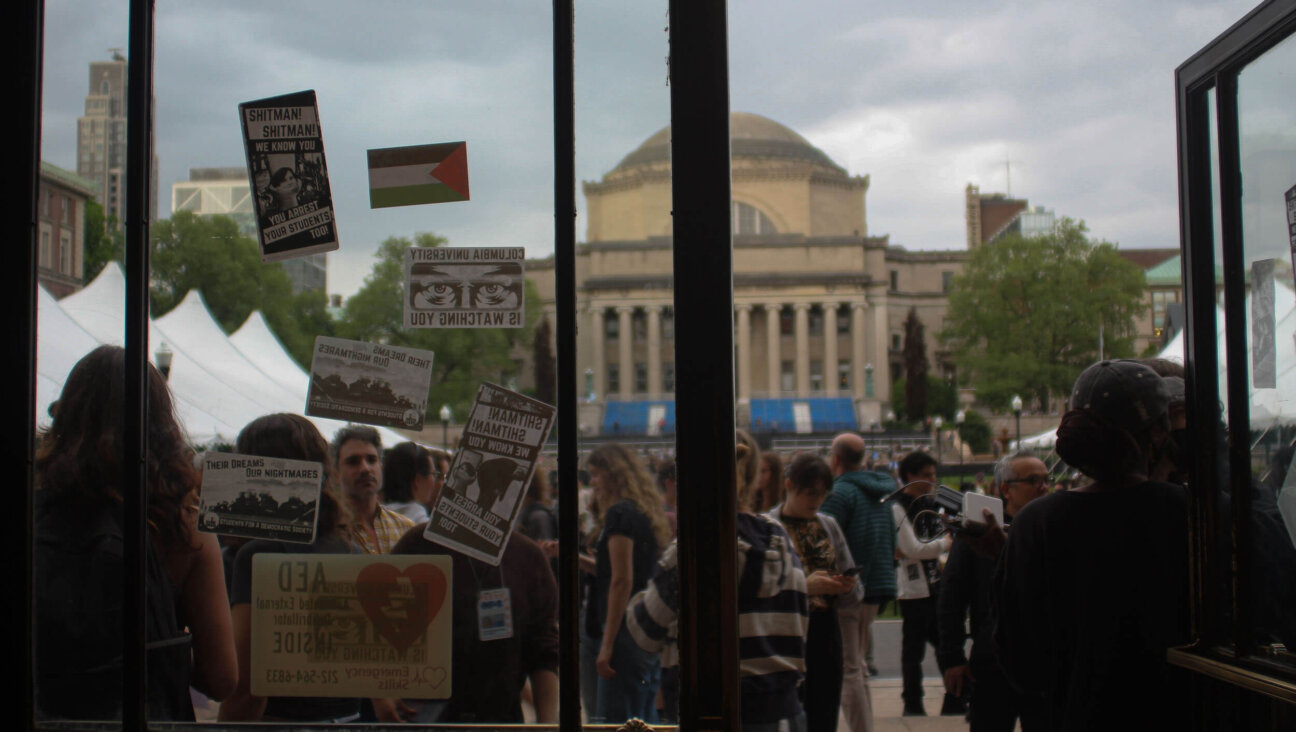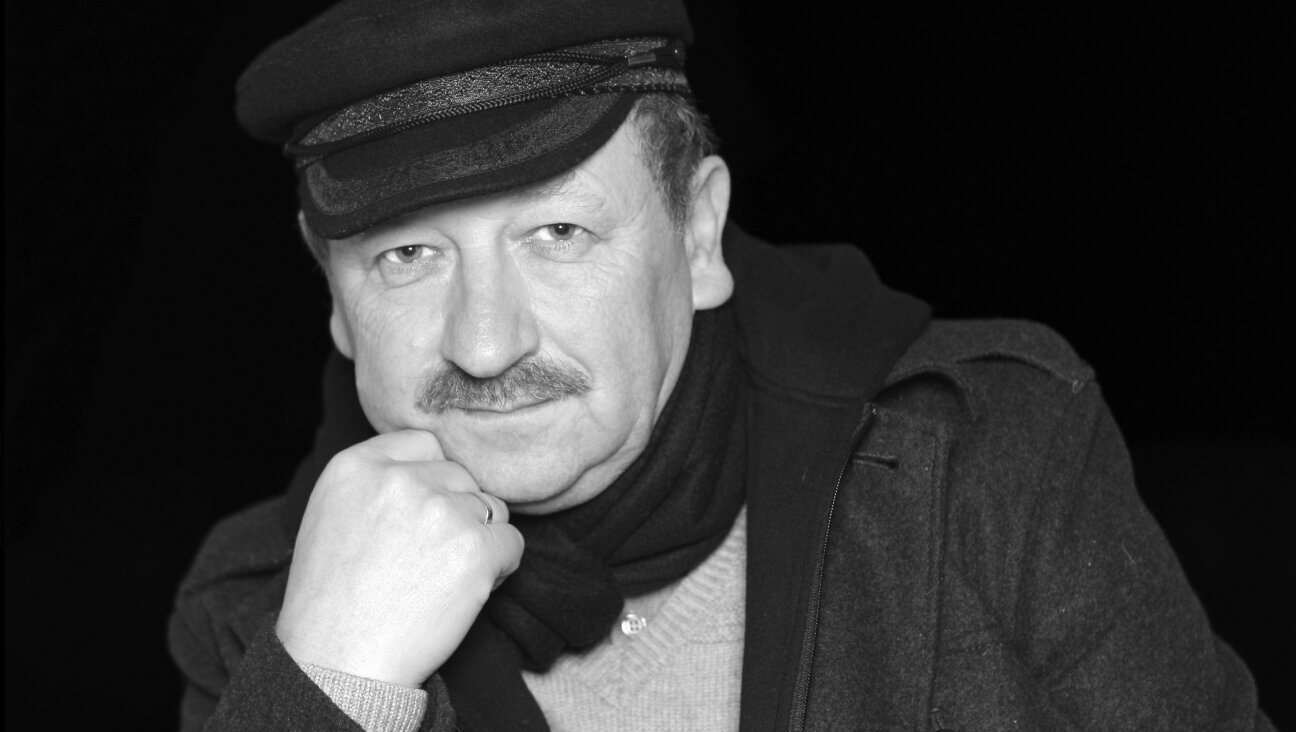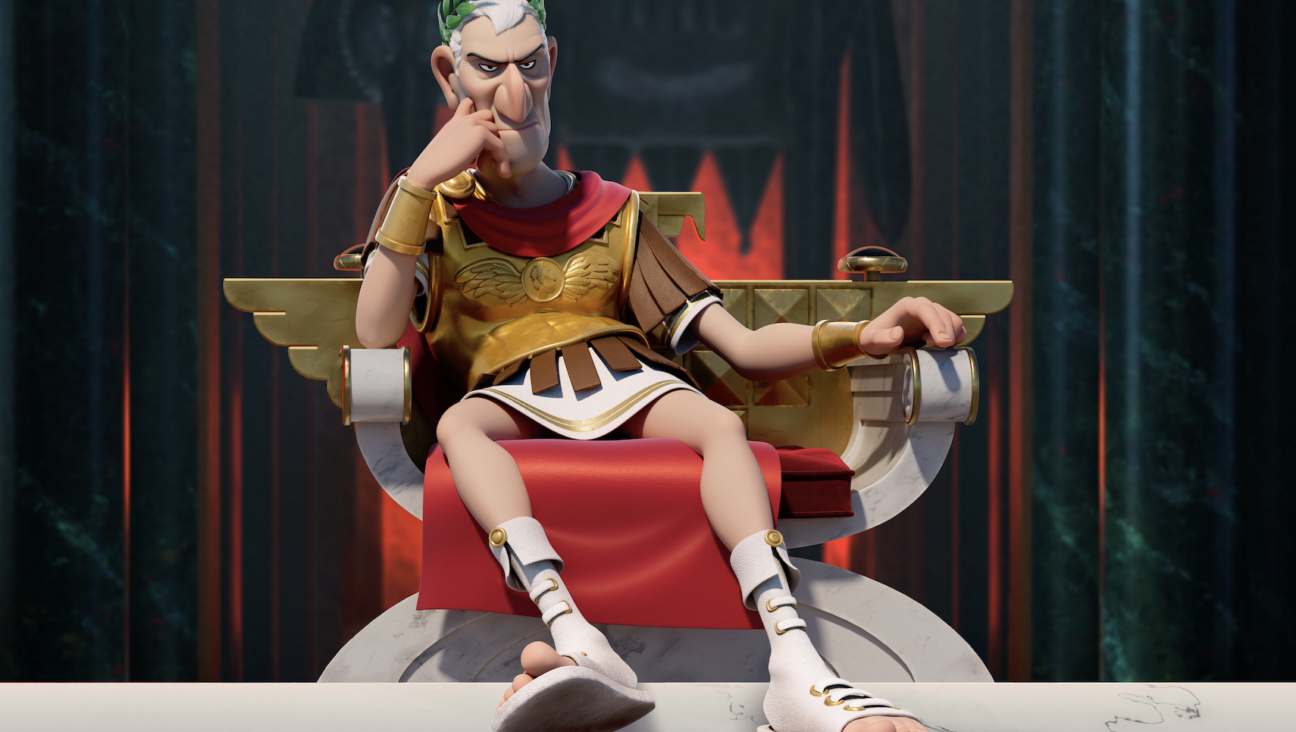How a Jewish sensibility informed the art and humor of Kurt Vonnegut
The author of ‘Slaughterhouse Five’ and ‘Cat’s Cradle’ considered himself part of Joseph Heller and Norman Mailer’s generation

Kurt Vonnegut during rehearsals for his off-Broadway play “Happy Birthday, Wanda June,” 1970. Photo by Getty Images
Did Kurt Vonnegut, whose centenary is celebrated this year on Nov. 11, identify more with American Jewish novelists or Jewish comedians?
Though the author of “Player Piano,” “Mother Night,” “Cat’s Cradle” and “Slaughterhouse-Five” was not Jewish, he told the interviewer Zoltán Abádi Nagy in 1982 that he considered himself part of a generation of authors that included Jewish American novelists Joseph Heller and Norman Mailer.
Vonnegut’s identification with Jewish comedians was even more acute. He was the subject of the documentary “Kurt Vonnegut: Unstuck in Time,” directed by Robert Weide, who has also produced documentaries on Jewish comedians like Mort Sahl, Lenny Bruce and Woody Allen. Vonnegut cooperated good-naturedly, doubtless in part due to his conviction that writers, like Jewish comedians, must be ever-aware of the public.
Often tormented in his private life (as are most comedians), Vonnegut rationalized his trademark dark humor as an antidepressant after reading the Austrian Jewish psychoanalyst Edmund Bergler, whose “The Writer and Psychoanalysis” argued that creative spirits cope with neuroses through daily professional tasks.
Vonnegut wrote to Weide in December 1987, praising Jack Benny (born Benjamin Kubelsky) as among humorists for whom “all humanity was the audience they were able to keep in mind.” Since directing a stand-up comedy routine or novel to all potential consumers was quasi-impossible, Vonnegut told Weide that he advised writing students instead to address people they know. He cited Lenny Bruce as someone who wooed a “few pals from childhood and youth, and the rest of us could listen, if we wanted.”
“Heller still does that,” Vonnegut added, shifting between the worlds of Jewish fiction and comedy as if no transition were needed. The novelist concluded that while Mort Sahl had tried to address the entire world, to little avail, Jackie Mason had better luck addressing “Jews in the Catskills.”
“I find it a privilege to hear what he says to them,” Vonnegut said.
Drawn to Jewish humor as a panacea, only two years after he attempted suicide in 1984, Vonnegut appeared in a comedy film, “Back to School,” starring Jacob Cohen, who performed under the name Rodney Dangerfield. In Vonnegut’s most celebrated novels, a sardonic sense of humor is applied as a salve to the tragedy of modern Jewish history.

“Mother Night” describes how Howard W. Campbell Jr., an American writer who moved to Germany in the 1920s as a youngster, became a notorious Nazi propagandist. After World War II, he awaits trial for war crimes in an Israeli prison alongside Adolf Eichmann. Nazi Propaganda Minister Joseph Goebbels and other malefactors show up throughout the novel, always portrayed with trenchant irony.
Howard W. Campbell Jr. also makes a cameo appearance in Vonnegut’s most celebrated fiction, “Slaughterhouse-Five,” inspired by the author’s real-life survival as an American prisoner of war sheltering in an underground meat locker during the Allied firebombing of Dresden, Germany.
Dealing with myths and metaphors rampant in the author’s youth, “Slaughterhouse Five” alludes to the wartime rumor, later debunked by the Yad Vashem Memorial, that Nazis produced soap with fat extracted from murdered concentration camp prisoners. Vonnegut extended this horrific propaganda to state that the “candles and the soap were made from the fat of rendered Jews and Gypsies and fairies and communists, and other enemies of the State.”
Even under less fraught historical circumstances, Vonnegut’s lampooning of the blind spots essential for antisemitic bigotry to exist was always note-perfect. His 1990 novel “Hocus Pocus” was about the last American military officer to leave Saigon during the Vietnam War. The novel also mocks the protagonist’s grandfather, who claims that reading the Old Testament without the New Testament must be a misfortune: “I pity the Jews trying to get through life with only half a Bible. That’s like trying to get from here to San Francisco with a road map that stops at Dubuque, Iowa.”
Vonnegut’s late work, “God Bless You, Dr. Kevorkian,” published in 1999, features a series of short Bob and Ray-style fictional interviews first broadcast on WNYC radio. With understatement akin to that of Mel Brooks when he told interviewer Jiminy Glick that his “big beef with the Nazis” was that “they’re rude,” Vonnegut announced that he had spoken with Hitler, who now offers a mealy mouthed apology for his crimes against humanity. Since Hitler and his mistress Eva Braun were among the “35 million” deaths caused by his actions, he feels that he “paid along with everybody else” and now deserves a “modest monument,” possibly at the UN headquarters in New York, bearing the German motto “Entschuldigen Sie” (Excuse Me).

As Vonnegut told Haaretz in December 2002, his instinctual reaction to the U.S. response to the Sept. 11 attacks was to liken special measures restricting civil liberties by President George W. Bush to the Reichstag fire of 1933, after which longstanding freedoms were suspended in Nazi Germany. With this historical frame of reference constantly in mind, it is natural that one of his less-remembered novels, 1987’s “Bluebeard,” should grapple with two 20th-century genocides, the Holocaust and the destruction of the Armenian people in the Ottoman Empire during World War I.
Always clinging to hope amid the wreckage of modern experience, Vonnegut opines in “Bluebeard” that salvation may derive from women as transformative societal influences, as well as the arts, to rebuild humanity. Perhaps not coincidentally, a number of recent books involved with Yiddishkeit quote and discuss Vonnegut, from Samuel Lebens’ “The Principles of Judaism” to Jay Michaelson’s “The Heresy of Jacob Frank: From Jewish Messianism to Esoteric Myth.” Could this be because, as Jodi Eichler-Levine intriguingly observed in a January 2010 article in “Shofar,” a correspondence may exist between traditional Jewish narrative of historical time, and Vonnegut’s literary approach?
Referring to “unstuck in time,” the topsy-turvy chronology set forth in “Slaughterhouse-Five,” Eichler-Levine mentioned Yosef Hayim Yerushalmi’s “Zakhor: Jewish History and Jewish Memory,” which observes that the “rabbis seem to play with Time as though with an accordion, expanding and collapsing it at will.”
Like these rabbis, Vonnegut used discontinuity to capture events suggestive of human frailty. In the 1974 essay collection “Wampeters, Foma & Granfalloons,” he noted that during World War II, the U.S. “fought something which was totally obscene.” Yet the post-victory triumphalism led to foreign entanglements and war atrocities, including in Vietnam, which turned out to be “very bad for us.”
Vonnegut always subscribed to the notion of World War II as an essential conflict, only criticizing later developments due to political misjudgments. Jewish friends and colleagues were a permanent source of solace for Kurt Vonnegut in the face of these upsets, like the poet Allen Ginsberg, whose “radiant love and innocence of his person, from head to toe” he lauded in a 1997 memorial tribute.
The Forward is free to read, but it isn’t free to produce

I hope you appreciated this article. Before you go, I’d like to ask you to please support the Forward.
Now more than ever, American Jews need independent news they can trust, with reporting driven by truth, not ideology. We serve you, not any ideological agenda.
At a time when other newsrooms are closing or cutting back, the Forward has removed its paywall and invested additional resources to report on the ground from Israel and around the U.S. on the impact of the war, rising antisemitism and polarized discourse.
This is a great time to support independent Jewish journalism you rely on. Make a gift today!
— Rachel Fishman Feddersen, Publisher and CEO
Support our mission to tell the Jewish story fully and fairly.
Most Popular
- 1

Culture Cardinals are Catholic, not Jewish — so why do they all wear yarmulkes?
- 2

Fast Forward Ye debuts ‘Heil Hitler’ music video that includes a sample of a Hitler speech
- 3

News School Israel trip turns ‘terrifying’ for LA students attacked by Israeli teens
- 4

Fast Forward Student suspended for ‘F— the Jews’ video defends himself on antisemitic podcast
In Case You Missed It
-

Opinion This week proved it: Trump’s approach to antisemitism at Columbia is horribly ineffective
-

Yiddish קאָנצערט לכּבֿוד דעם ייִדישן שרײַבער און רעדאַקטאָר באָריס סאַנדלערConcert honoring Yiddish writer and editor Boris Sandler
דער בעל־שׂימחה האָט יאָרן לאַנג געדינט ווי דער רעדאַקטאָר פֿונעם ייִדישן פֿאָרווערטס.
-

Fast Forward Trump’s new pick for surgeon general blames the Nazis for pesticides on our food
-

Fast Forward Jewish feud over Trump escalates with open letter in The New York Times
-
Shop the Forward Store
100% of profits support our journalism
Republish This Story
Please read before republishing
We’re happy to make this story available to republish for free, unless it originated with JTA, Haaretz or another publication (as indicated on the article) and as long as you follow our guidelines.
You must comply with the following:
- Credit the Forward
- Retain our pixel
- Preserve our canonical link in Google search
- Add a noindex tag in Google search
See our full guidelines for more information, and this guide for detail about canonical URLs.
To republish, copy the HTML by clicking on the yellow button to the right; it includes our tracking pixel, all paragraph styles and hyperlinks, the author byline and credit to the Forward. It does not include images; to avoid copyright violations, you must add them manually, following our guidelines. Please email us at [email protected], subject line “republish,” with any questions or to let us know what stories you’re picking up.
















